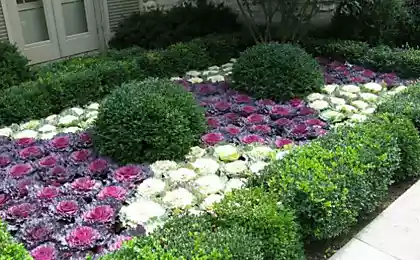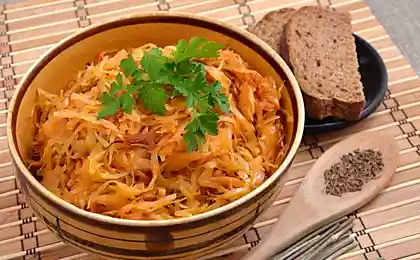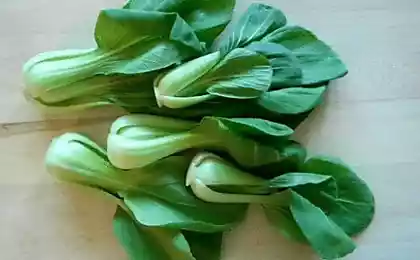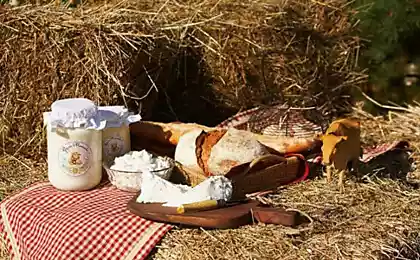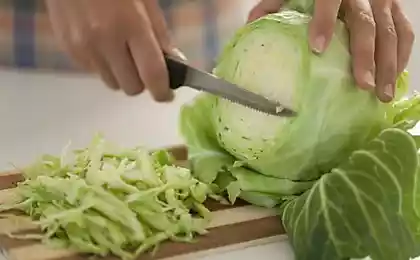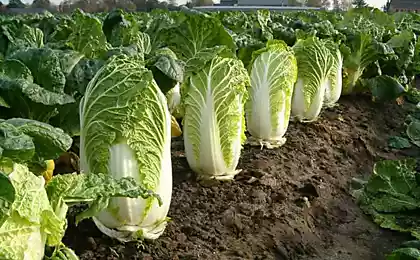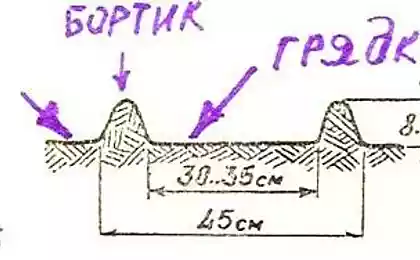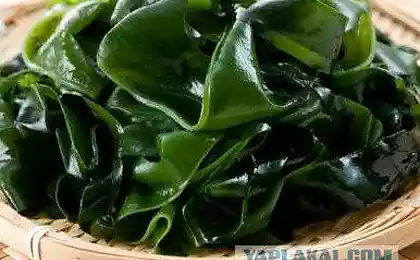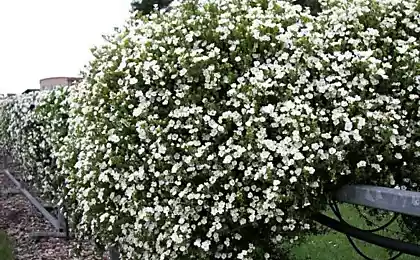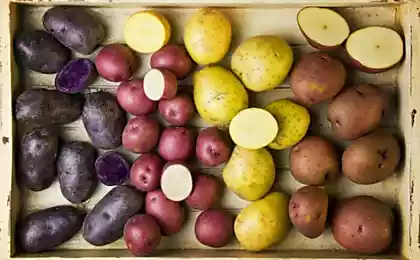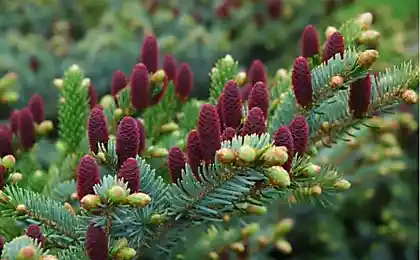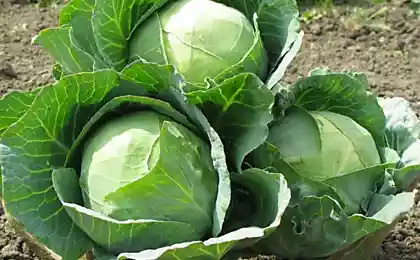445
Unusual Kale - grunkohl
The Cabbage family, is rich in forms. There are dwarfs and giants, lush and slender "person". But Kale has just Grenadier!
Interestingly, Kale calcium more than milk. In addition, in the cabbage are carbohydrates (5,3–8,6 %), nitrogenous substances (1,3–3,8 %), salt, sulphur, calcium, phosphorus and potassium, fiber, vitamins A, B1, B6, C, R, K, U, fats (0,2-0,8 %), volatile. Nutritional value of about 24 kcal/100 g.
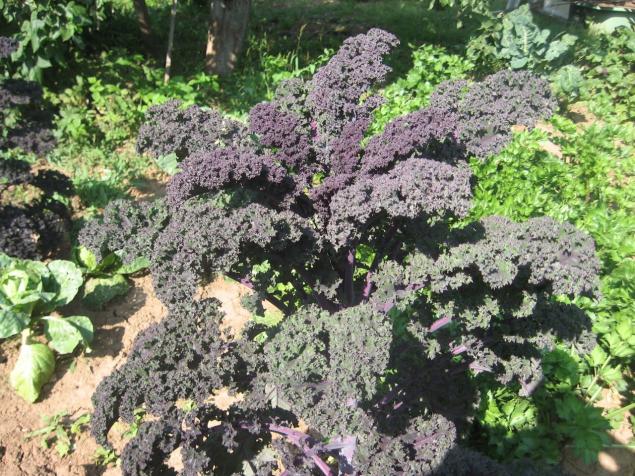
Like other types of cabbage, leafy need loose, organic-rich soil. With the fall of the land for Kale dug bayonet spade, adding in compost or other natural fertilizer. And in the spring two weeks before planting seedlings or sowing seeds in the soil, making complex mineral fertilizer – about 60 g of granules per square meter.
How to grow. Kale can be grown through seedling or sowing in the ground. Nonseedlings method of growing cabbage: seeds are sown on the beds, leaving the aisle with a width of 60-70 cm, the first thinning is carried out in the phase of 1-2 leaves, the second – in the phase of 4-5 leaves, leaving the distance between plants 30-35 cm
Seedling method of cultivation of cabbage: sow the seeds in seedling boxes, and the seedlings in small containers. In the ground seedlings are planted at the age of 45 days.
Around planted plants form small wells to irrigation water flowed and fell directly to the roots. Cabbage in dry weather like a regular and abundant watering. During the summer the soil around the plants loosened constantly. When you start actively growing young leaves, Collard greens can be fed a liquid organic fertilizer (2 l of sifted compost, pour a bucket of water and leave to steep for days in a Sunny place, then drain settled water to the compost, use it for fertilizing young plants). Another option is organic fertilizers – herbal infusion.
Our reference. Kale (Kale, grunkohl) – Brassica oleracea var. sabellica is one of the oldest forms of cabbage vegetable. Very cold-resistant and damage its tissues occurs only at -10°C. the Height of the stem can reach five feet. Her huge bubble sheets are sitting on a strong stem. She was known to the ancient Greeks in the III century BC. In the XVI century, the herbalists of its description along with other types of cabbage. Herbal liquid fertilizer. In the barrel, one quarter of its height, water is poured. Putting on there are fresh plants, including weeds (about 10 kg per 100 l of water). Add there 2-3 kg (100 liters of water) dry chicken manure. Capacity, where infused fertilizer, closed mesh. Once on the surface of the infusion will foam, fertilizer is thoroughly mixed daily, to stimulate the fermentation process. Depending on the temperature the process will last 1-3 weeks. Once the fermentation ends, the smell will disappear, the foam ceases to stand out – the fertilizer is ready to use. The infusion is diluted with water, approximately 1:1, i.e. 5 liters of infusion will need 5 liters of water. Cabbage or other garden plants with diluted tincture is poured exclusively at the root.
Kale is extremely resistant under the most adverse conditions
Harvesting For salads during the summer, cut the young leaves from the center of the socket. Kale is better to use before she leaves is blinded. Although a traditional German dish of Grünkohl mit Mettwürstchen (grunkohl with pork sausage) is prepared from the leaves of grunkohl collected in late autumn, after the frosts hit.
Grunkohl pork sausage • 1 kg of grunkle
• 125 g bacon
• 2 bulbs
• 4 potatoes
• Westphalian pork sausages
• 2 tsp salt
Progress: Cut the bacon and onion cubes, put in a pot and fry, add grunkohl and fry for a few minutes. Pour 3 cups of cold water, potatoes cut into large chunks and add to grunkohl. Close the lid and cook for another hour. Serve with sausages.
Source: www.ldacha.ru
Interestingly, Kale calcium more than milk. In addition, in the cabbage are carbohydrates (5,3–8,6 %), nitrogenous substances (1,3–3,8 %), salt, sulphur, calcium, phosphorus and potassium, fiber, vitamins A, B1, B6, C, R, K, U, fats (0,2-0,8 %), volatile. Nutritional value of about 24 kcal/100 g.

Like other types of cabbage, leafy need loose, organic-rich soil. With the fall of the land for Kale dug bayonet spade, adding in compost or other natural fertilizer. And in the spring two weeks before planting seedlings or sowing seeds in the soil, making complex mineral fertilizer – about 60 g of granules per square meter.
How to grow. Kale can be grown through seedling or sowing in the ground. Nonseedlings method of growing cabbage: seeds are sown on the beds, leaving the aisle with a width of 60-70 cm, the first thinning is carried out in the phase of 1-2 leaves, the second – in the phase of 4-5 leaves, leaving the distance between plants 30-35 cm
Seedling method of cultivation of cabbage: sow the seeds in seedling boxes, and the seedlings in small containers. In the ground seedlings are planted at the age of 45 days.
Around planted plants form small wells to irrigation water flowed and fell directly to the roots. Cabbage in dry weather like a regular and abundant watering. During the summer the soil around the plants loosened constantly. When you start actively growing young leaves, Collard greens can be fed a liquid organic fertilizer (2 l of sifted compost, pour a bucket of water and leave to steep for days in a Sunny place, then drain settled water to the compost, use it for fertilizing young plants). Another option is organic fertilizers – herbal infusion.
Our reference. Kale (Kale, grunkohl) – Brassica oleracea var. sabellica is one of the oldest forms of cabbage vegetable. Very cold-resistant and damage its tissues occurs only at -10°C. the Height of the stem can reach five feet. Her huge bubble sheets are sitting on a strong stem. She was known to the ancient Greeks in the III century BC. In the XVI century, the herbalists of its description along with other types of cabbage. Herbal liquid fertilizer. In the barrel, one quarter of its height, water is poured. Putting on there are fresh plants, including weeds (about 10 kg per 100 l of water). Add there 2-3 kg (100 liters of water) dry chicken manure. Capacity, where infused fertilizer, closed mesh. Once on the surface of the infusion will foam, fertilizer is thoroughly mixed daily, to stimulate the fermentation process. Depending on the temperature the process will last 1-3 weeks. Once the fermentation ends, the smell will disappear, the foam ceases to stand out – the fertilizer is ready to use. The infusion is diluted with water, approximately 1:1, i.e. 5 liters of infusion will need 5 liters of water. Cabbage or other garden plants with diluted tincture is poured exclusively at the root.
Kale is extremely resistant under the most adverse conditions
Harvesting For salads during the summer, cut the young leaves from the center of the socket. Kale is better to use before she leaves is blinded. Although a traditional German dish of Grünkohl mit Mettwürstchen (grunkohl with pork sausage) is prepared from the leaves of grunkohl collected in late autumn, after the frosts hit.
Grunkohl pork sausage • 1 kg of grunkle
• 125 g bacon
• 2 bulbs
• 4 potatoes
• Westphalian pork sausages
• 2 tsp salt
Progress: Cut the bacon and onion cubes, put in a pot and fry, add grunkohl and fry for a few minutes. Pour 3 cups of cold water, potatoes cut into large chunks and add to grunkohl. Close the lid and cook for another hour. Serve with sausages.
Source: www.ldacha.ru
